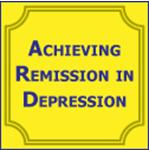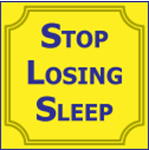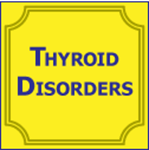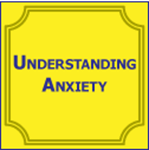You have no items in your shopping cart.
AEA Approved for Electrologists
Neck & Shoulder Pain
Identifies the anatomy and function of the neck and shoulder joint. Identifies the different neck and shoulder disorders. Discusses the differences in presentation of signs and symptoms among the different neck and shoulder disorders. Describes the role of imaging in the diagnosis of neck and shoulder disorders. Lists surgical and non-surgical treatment options for these disorders. Discusses recent advances in joint replacement surgery (arthroplasty) and artificial disc replacement.
$30.00
Neck & Shoulder Pain - Ebooklet
Identifies the anatomy and function of the neck and shoulder joint. Identifies the different neck and shoulder disorders. Discusses the differences in presentation of signs and symptoms among the different neck and shoulder disorders. Describes the role of imaging in the diagnosis of neck and shoulder disorders. Lists surgical and non-surgical treatment options for these disorders. Discusses recent advances in joint replacement surgery (arthroplasty) and artificial disc replacement.
$25.00
Neurotransmitters: The Bridges of the Brain
Identifies the importance of neurotransmission for higher cognitive functions of the human brain. Outlines known neurotransmitters and their interplay in the brain as well as the influence of various neurotransmitters on thought, mood, and emotions. Identifies the various pharmaceutical and alternative remedies that influence the function of neurotransmitters. Discusses possible ways to optimize patient management and minimize of drug interactions, including those with medications used in dental practice.
$30.00
Neurotransmitters: The Bridges of the Brain - Ebooklet
Identifies the importance of neurotransmission for higher cognitive functions of the human brain. Outlines known neurotransmitters and their interplay in the brain as well as the influence of various neurotransmitters on thought, mood, and emotions. Identifies the various pharmaceutical and alternative remedies that influence the function of neurotransmitters. Discusses possible ways to optimize patient management and minimize of drug interactions, including those with medications used in dental practice.
$25.00
Non-traditional Approaches: Anxiety, Insomnia, & Depression
Identifies and describe cognitive behavioral therapy techniques used in treatment of insomnia, depression, and anxiety. Discusses how existing communication technology expands psychotherapeutic treatment options. Lists reasons why many people with anxiety disorders never seek medical help. Discusses how non-traditional approaches can improve patient care and outcomes.
$30.00
Non-traditional Approaches: Anxiety, Insomnia, & Depression - Ebooklet
Identifies and describe cognitive behavioral therapy techniques used in treatment of insomnia, depression, and anxiety. Discusses how existing communication technology expands psychotherapeutic treatment options. Lists reasons why many people with anxiety disorders never seek medical help. Discusses how non-traditional approaches can improve patient care and outcomes.
$25.00
Omega-3 Fatty Acids
Identifies essential fatty acids and their metabolites, including eicosanoids, and the beneficial role fatty acids play in maintaining health. Describes clinical implications of omega-3 fatty acid deficiency and issues surrounding supplementation with these compounds. Discusses possible clinical benefits of supplementation with omega-3 fatty acids for various conditions, including neurologic, cardiovascular and immunologic pathology. Identifies issues related to mercury contamination of food sources, including fish and other seafood, and proper dietary recommendations for various categories of patients, including pregnant women, patients with essential fatty acid deficiencies, and patients with neurologic concerns.
$30.00
On Loss & Grief
Discusses the clinical study of grief from classical to modern times. Identifies emotional, cognitive, behavioral, social, and physical responses to loss. Describes resilience to loss and explain what may increase the likelihood of this response. Discusses the role of grief counseling and when it may be useful. Describes an intervention model for dealing with loss and grief. Explains the differences between normal and complicated grief. Discusses the treatment of grief in children and adolescents.
$30.00
On Loss & Grief - Ebooklet
Discusses the clinical study of grief from classical to modern times. Identifies emotional, cognitive, behavioral, social, and physical responses to loss. Describes resilience to loss and explain what may increase the likelihood of this response. Discusses the role of grief counseling and when it may be useful. Describes an intervention model for dealing with loss and grief. Explains the differences between normal and complicated grief. Discusses the treatment of grief in children and adolescents.
$25.00
Paradise Regained: Achieving Remission in Depression
Identifies pharmacological, herbal, and integrative approaches useful in remission-oriented management of unipolar depression/major depressive disorder and bipolar disorder. Outlines the issues of neurotransmitter-affecting medications, associated side effects, and interactions with other medications, including drugs used in dental practice. Discusses the optimal strategies for treatment augmentation in cases of treatment-resistant depression. Discusses experimental treatments for depression (e.g., transcranial magnetic therapy and vagus nerve stimulation) with patients.
$30.00
Paradise Regained: Achieving Remission in Depression - Booklet
Identifies pharmacological, herbal, and integrative approaches useful in remission-oriented management of unipolar depression/major depressive disorder and bipolar disorder. Outlines the issues of neurotransmitter-affecting medications, associated side effects, and interactions with other medications, including drugs used in dental practice. Discusses the optimal strategies for treatment augmentation in cases of treatment-resistant depression. Discusses experimental treatments for depression (e.g., transcranial magnetic therapy and vagus nerve stimulation) with patients.
$25.00
Poles Apart: Unipolar vs. Bipolar Depression
Identifies the basic neurophysiology, pathogenesis, etiology, and diagnosis of affective unipolar disorder/major depressive disorder (UD/MDD) and bipolar disorder (BD). Discusses the involvement of various chemical imbalances in these affective disorders, including neurotransmitters and neurohormones such as serotonin, norepinephrine, dopamine and cortisol. Lists the differential diagnosis of these conditions and the management of both disorders. Describe the spectrum of available pharmacological, psychotherapeutic, and experimental therapies for both conditions.
$30.00
Poles Apart: Unipolar vs. Bipolar Depression - Ebooklet
Identifies the basic neurophysiology, pathogenesis, etiology, and diagnosis of affective unipolar disorder/major depressive disorder (UD/MDD) and bipolar disorder (BD). Discusses the involvement of various chemical imbalances in these affective disorders, including neurotransmitters and neurohormones such as serotonin, norepinephrine, dopamine and cortisol. Lists the differential diagnosis of these conditions and the management of both disorders. Describe the spectrum of available pharmacological, psychotherapeutic, and experimental therapies for both conditions.
$25.00
Positive Psychology
Describes the origin and goals of the new “positive psychology.” Lists the factors that contribute to happiness and life satisfaction. Discusses the research findings related to happiness and life satisfaction. Lists several activities and exercises that can enhance happiness and life satisfaction.
$30.00
Positive Psychology - Ebooklet
Describes the origin and goals of the new “positive psychology.” Lists the factors that contribute to happiness and life satisfaction. Discusses the research findings related to happiness and life satisfaction. Lists several activities and exercises that can enhance happiness and life satisfaction.
$25.00
Psychology of Bullying
Defines various forms of bullying, associated behavioral traits, and prevalence. Describes individual, family, and social factors related to child and youth bullying. Explains bias-based bullying including race, ethnicity, gender, sexual orientation, disabilities. Discusses cyber bullying and associated problems. Describes bullying within friendships. Discusses intervention and treatment strategies for child and youth bullying. Outlines the problem of office and workplace bullying and how to respond to it.
$30.00
Psychology of Relationships
Social workers routinely encounter patients who are experiencing problems in their personal relationships, in clinics, hospitals, long term care facilities and community centers, and in home visits. These difficulties may range from poor communication to serious disagreements and arguments, to verbal abuse and physical violence perpetrated by one partner on another or a parent on a child. Many patients may be involved in a relationship that is clearly "dysfunctional" and even harmful, yet the person does not seem able to extricate themselves from it. Others may be involved in relationships that are relatively stable and less problematic, yet they will tend to have the same disagreements or arguments repeatedly. These relationship difficulties can cause individuals significant stress and aggravation, undermine their well-being, potentially contribute to health problems, and in some cases can put individuals in considerable danger.
$35.00
Reducing Stress
Explains how the body responds to and processes stress. Identifies the impact of stress on risk for heart disease and the physiological mechanisms that may mediate this link. Describes the role stress may play in increasing risk for health problems across the life span. Identifies a number of interventions for reducing stress.
$30.00
Reducing Stress - Ebooklet
Explains how the body responds to and processes stress. Identifies the impact of stress on risk for heart disease and the physiological mechanisms that may mediate this link. Describes the role stress may play in increasing risk for health problems across the life span. Identifies a number of interventions for reducing stress.
$25.00
Skin Care, Allergies, & Wrinkles
Explains the diagnosis and newest treatments for skin conditions and skin allergies. Describes new laser treatments for wrinkles and other skin conditions. Lists the most effective preventive and treatment methods for skin cancer. Identifies coping strategies for patients with psychosocial issues caused by chronic skin conditions. Identifies future trends in medical and cosmetic skin treatments.
$30.00
Skin Care, Allergies, & Wrinkles - Ebooklet
Explains the diagnosis and newest treatments for skin conditions and skin allergies. Describes new laser treatments for wrinkles and other skin conditions. Lists the most effective preventive and treatment methods for skin cancer. Identifies coping strategies for patients with psychosocial issues caused by chronic skin conditions. Identifies future trends in medical and cosmetic skin treatments.
$25.00
Social Anxiety
Defines social anxiety. Describes the symptoms of social anxiety. Identifies the causes of social anxiety. Describes the similarities and differences between shyness and social anxiety. Outlines the role of thinking in social anxiety. Describes strategies for coping with and reducing social anxiety.
$30.00
Stimulants: Caffeine, Amphetamines, etc.
Identifies the physiologic, pharmacologic, and psychoneurologic properties of stimulants. Outlines the issues of caffeine toxicity, caffeine withdrawal, and management of caffeine-related disorders. Describes the mechanisms involved in amphetamine addiction and approaches to management of this condition. Identifies stimulants and stimulant-like medications used in weight reduction and appetite suppression.
$30.00
Stimulants: Caffeine, Amphetamines, etc. - Ebooklet
Identifies the physiologic, pharmacologic, and psychoneurologic properties of stimulants. Outlines the issues of caffeine toxicity, caffeine withdrawal, and management of caffeine-related disorders. Describes the mechanisms involved in amphetamine addiction and approaches to management of this condition. Identifies stimulants and stimulant-like medications used in weight reduction and appetite suppression.
$25.00
Stop Losing Sleep
Outlines the classification and diagnosis of sleep disorders, including various insomnias and circadian rhythm anomalies, restless legs syndrome (RLS), and periodic limb movement disorder (PLMD). Identifies other conditions that may contribute to sleep disorders, including neurological, endocrinological, and psychological disorders. Describes the approaches to management of sleep disorders, both pharmacological and nonpharmacological (e.g., dietary, hygienic, and psychosocial). Identifies clinical ramifications of sleep apnea and RLS/PLMD pertinent to dental practice and general clinical practice.
$30.00
Stop Losing Sleep - Ebooklet
Outlines the classification and diagnosis of sleep disorders, including various insomnias and circadian rhythm anomalies, restless legs syndrome (RLS), and periodic limb movement disorder (PLMD). Identifies other conditions that may contribute to sleep disorders, including neurological, endocrinological, and psychological disorders. Describes the approaches to management of sleep disorders, both pharmacological and nonpharmacological (e.g., dietary, hygienic, and psychosocial). Identifies clinical ramifications of sleep apnea and RLS/PLMD pertinent to dental practice and general clinical practice.
$25.00
Stroke
Describes the pathophysiology associated with stroke. Discusses the major risk factors for stroke. Identifies the lifestyle and dietary changes that can help prevent the onset of a stroke. Describes currently available treatments and new therapies still under investigation. Explains the role of the rehabilitation team, including physical and occupational therapists, and counselors, in helping to improve patient outcome.
$30.00
Successful Aging - 2nd ed
This home-study course describes the best ways to age healthfully and improve your patients` quality of life at any age, including tips on how to cultivate a youthful attitude, safeguard against stress and chronic illness, improve dietary and exercise habits, maximize memory and beef up energy, enhance financial security, and live a long and rewarding life.
$35.00
Successful Aging 2nd ed - EBOOK
This home-study course describes the best ways to age healthfully and improve your patients` quality of life at any age, including tips on how to cultivate a youthful attitude, safeguard against stress and chronic illness, improve dietary and exercise habits, maximize memory and beef up energy, enhance financial security, and live a long and rewarding life.
$25.00
Successful Aging 2nd ed - EBOOK only *NO CE
This home-study course describes the best ways to age healthfully and improve your patients` quality of life at any age, including tips on how to cultivate a youthful attitude, safeguard against stress and chronic illness, improve dietary and exercise habits, maximize memory and beef up energy, enhance financial security, and live a long and rewarding life.
$15.00
Sugar, Salt, & Fat 2nd edition - EBOOK
This home-study course outlines the various factors that make foods palatable. It provides evidence that the "hyperpalatability" of our current food supply is undermining our normal satiety signals, motivating the drive to eat even when there is no physiologic need for food. This course presents evidence that repeated exposure to high quantities of palatable foods (i.e., those high in sugar, fat and salt) can alter the brain in ways similar to drugs of abuse, essentially "rewiring" the brain to promote compulsive eating and loss of control over food.
$25.00
Sugar, Salt, & Fat 2nd edition - EBOOK only *NO CE
This home-study course outlines the various factors that make foods palatable. It provides evidence that the "hyperpalatability" of our current food supply is undermining our normal satiety signals, motivating the drive to eat even when there is no physiologic need for food. This course presents evidence that repeated exposure to high quantities of palatable foods (i.e., those high in sugar, fat and salt) can alter the brain in ways similar to drugs of abuse, essentially "rewiring" the brain to promote compulsive eating and loss of control over food.
$15.00
The Healing Power of Sleep - 2nd Edition
Millions of us struggle with sleep several nights a week, if not every night. In the The Healing Power of Sleep, Dr. O`Brien explains the basics of sleep architecture, the effects of common illnesses on sleep, how our daily habits can help or hinder sleep, and straightforward solutions.
$40.00
The Healing Power of Sleep 2nd Edition - EBOOK
Millions of us struggle with sleep several nights a week, if not every night. In the The Healing Power of Sleep, Dr. O`Brien explains the basics of sleep architecture, the effects of common illnesses on sleep, how our daily habits can help or hinder sleep, and straightforward solutions.
$30.00
The Healing Power of Sleep 2nd Edition - EBOOK only *NO CE
Millions of us struggle with sleep several nights a week, if not every night. In the The Healing Power of Sleep, Dr. O`Brien explains the basics of sleep architecture, the effects of common illnesses on sleep, how our daily habits can help or hinder sleep, and straightforward solutions.
$20.00
The Insulin Connection
Describes the normal functions of insulin. Discusses what it means to be “resistant” to insulin. Lists ways to determine whether a person is insulin resistant. Outlines consequences of insulin resistance. Identifies steps to improve insulin sensitivity or reverse insulin resistance.
$30.00
The Mediterranean Diet
Identifies the countries included in the Mediterranean region and discusses their traditional way of life. Describes the food-based guidelines that make up the Mediterranean pyramid. Explains the significance of physical activity, diet, and social interaction as part of the Mediterranean way of life. Discusses the research that supports the health benefits of the Mediterranean Diet with respect to heart disease, diabetes, obesity, cognitive function, cancer, and other chronic diseases. Describes how the Western diet and lifestyle can be modified to comply with Mediterranean lifestyle recommendations.
$30.00
The Mediterranean Diet - Ebooklet
Identifies the countries included in the Mediterranean region and discusses their traditional way of life. Describes the food-based guidelines that make up the Mediterranean pyramid. Explains the significance of physical activity, diet, and social interaction as part of the Mediterranean way of life. Discusses the research that supports the health benefits of the Mediterranean Diet with respect to heart disease, diabetes, obesity, cognitive function, cancer, and other chronic diseases. Describes how the Western diet and lifestyle can be modified to comply with Mediterranean lifestyle recommendations.
$25.00
The Power of Walking
States the CDC’s, and the American College of Sports Medicine’s recommendations for daily physical activity for adults, children, and adolescents. Describes the health benefits of walking. Explains how walking can reduce the risk of various diseases, including diabetes, heart disease, cancer, depression, and dementia. Describes how walking can benefit children, adults, pregnant women, and the elderly. Identifies the physical, occupational, and other therapeutic benefits of walking. Outlines how to start and maintain a walking program.
$30.00
Thyroid Disorders
Describes the anatomy of the thyroid gland. Describes the complex thyroid gland physiology. Distinguishes between hypothyroidism and hyperthyroidism. Discusses thyroid nodules. Discusses thyroid cancer.
$30.00
Understanding Anxiety
Explains the difference between normal anxiety and an anxiety disorder. Describes the causes of anxiety. Outlines the demographics of anxiety. Describes the anxious personality. Recognizes and describes the most common anxiety disorders in adults and children including symptoms and treatment. Describes the role of exercise in treating anxiety. Describes common methods of assessing anxiety in primary care settings. Explains how state anxiety and trait anxiety differ. Outlines common comorbidities frequently seen with anxiety.
$30.00
Understanding Cholesterol
Lists the various lipid components of total cholesterol and describes how they are formed in the body. Describes the physiological function of each lipid faction. Discusses how abnormal lipid levels may contribute to cardiovascular disease. Describes the lipid profile test and explains what values are considered desirable. Explains how lifestyle factors such as diet and inactivity can contribute to lipid abnormalities and treatment options. Describes the various categories of drugs used to treat lipid abnormalities. Describes some effective, realistic, and easily implemented strategies to improve patient adherence.
$30.00
Understanding Cholesterol - Ebooklet
Lists the various lipid components of total cholesterol and describes how they are formed in the body. Describes the physiological function of each lipid faction. Discusses how abnormal lipid levels may contribute to cardiovascular disease. Describes the lipid profile test and explains what values are considered desirable. Explains how lifestyle factors such as diet and inactivity can contribute to lipid abnormalities and treatment options. Describes the various categories of drugs used to treat lipid abnormalities. Describes some effective, realistic, and easily implemented strategies to improve patient adherence.
$25.00
Vitamin D: Vitamin, Hormone, & Protector
Discusses the historical incidents that led to the discovery of vitamin D. Recognizes the synthesis and function of various forms of inactive and active vitamin D. Describes the role that vitamin D may play in the physiological function of various systems. Lists the current guidelines for supplementation of vitamin D. Lists the blood levels that define the various categories of vitamin D deficiency and sufficiency. Identifies the best food sources of vitamin D.
$30.00
Vitamin D: Vitamin, Hormone, & Protector - Ebooklet
Discusses the historical incidents that led to the discovery of vitamin D. Recognizes the synthesis and function of various forms of inactive and active vitamin D. Describes the role that vitamin D may play in the physiological function of various systems. Lists the current guidelines for supplementation of vitamin D. Lists the blood levels that define the various categories of vitamin D deficiency and sufficiency. Identifies the best food sources of vitamin D.
$25.00
Weight Perfect - 3rd Edition
This home-study course describes the newest research on losing weight and maintaining weight loss for life. The book provides details about the connection between weight gain and medical conditions, and obesity and sleeplessness. It also gives information about popular weight loss plans, describes scientific studies on the effectiveness of these plans, and discusses research on the connection between emotions, cravings and overeating.
$40.00
Weight Perfect 3rd Edition - EBOOK *NO CE
This home-study course describes the newest research on losing weight and maintaining weight loss for life. The book provides details about the connection between weight gain and medical conditions, and obesity and sleeplessness. It also gives information about popular weight loss plans, describes scientific studies on the effectiveness of these plans, and discusses research on the connection between emotions, cravings and overeating.
$20.00
Weight Perfect 3rd Edition - EBOOK
This home-study course describes the newest research on losing weight and maintaining weight loss for life. The book provides details about the connection between weight gain and medical conditions, and obesity and sleeplessness. It also gives information about popular weight loss plans, describes scientific studies on the effectiveness of these plans, and discusses research on the connection between emotions, cravings and overeating.
$30.00
Women's Health & Physical Fitness
Identifies the benefits of regular exercise and fitness at all stages of life. Describes the current physical activity guidelines for healthy American adults, focusing on those specifically applicable to women. Explains the components of a good physical activity program and why each one is important for a woman’s health. Describes the fitness requirements for women during pregnancy and after menopause.
$30.00
Women's Health: Chronic Pain
Describes the difference between chronic and acute pain. Identifies the symptoms of and treatments for chronic pain conditions affecting women. Discusses the role of home remedies, relaxation techniques, and other non-drug therapies for treating chronic pain. Explains the psychosocial aspects of treating chronic pain. Describes how to manage use of pain medications, including opioids, to ensure patient safety.
$30.00


















































